by Clarity by Rego
Share
- Best Practices for Optimizing Resource Management
- Effective Resource Management is More Critical Than Ever
- Key Elements of Successful Resource Management
- Balancing Resource Capacity: The Key to Sustainability
- Common Challenges in Resource Management
- Key Components of Effective Resource Management
- Best Practices for Implementing Resource Management
- Becoming a Value Driver Through Resource Management
- Get Notified of Updates.

Organizations are constantly being asked to do more with less. Reduced budgets, shrinking headcounts, and increasing demands for innovation are common across industries. Whether you’re managing projects in a traditional office setup or navigating the complexities of a hybrid workforce, the challenges of efficiently allocating resources, maintaining project timelines, and preventing team burnout are universal.
Your project success is dependent on effective resource management. In this article, we’ll explore best practices for optimizing resource management to boost project quality and create a sustainable, balanced work environment.
Effective Resource Management is More Critical Than Ever
Resource management ensures that your organization has the right people, skills, tools, and equipment available and properly allocated to meet project demands. In hybrid business models, with both remote and in-office teams, streamlined resource management is even more critical.
Many businesses today face the same challenges: rising customer expectations, intense pressure to innovate, and limited resources. This “do more with less” strategy can lead to unsustainable practices without effective resource management, often resulting in delayed projects, burnout, and missed opportunities.
Key Elements of Successful Resource Management
At its core, resource management is about ensuring that the right people are assigned to the right tasks at the right time. Two critical processes make this possible:
Capacity Planning for Resource Allocation:
Capacity Planning takes a broader, long-term view of resource needs. It helps organizations forecast whether they have the necessary resources to meet both current and future project demands. This process looks at the pipeline of upcoming projects and assesses the availability of key resources (people, budget, tools, etc.) over a long period.
Resource Management for Execution:
Resource Management is the more immediate process of allocating resources to specific projects and tasks. It’s about finding the right people with the right skills at the right time to meet day-to-day operational needs. Resource management is inherently more focused on execution and the short-term management of workloads.
While these two processes often overlap, capacity planning is primarily about forecasting and preparation, while resource management is about execution. Both are critical for successful project delivery.
Balancing Resource Capacity: The Key to Sustainability
Maintaining a sustainable workload is fundamental to effective resource management. Overburdened teams face higher risks of burnout, stress, and lower productivity. Strategic resource allocation and workload balancing help organizations complete essential projects while sustaining employee well-being.
In times of crisis or disruption, this balance is even more critical. Organizations need to deploy their resources strategically to ensure that the most important work gets done, while still maintaining a manageable workload for employees. This balancing act helps ensure both short-term survival and long-term success.
Common Challenges in Resource Management
Many organizations face significant challenges in managing their resources effectively. Some of the most common obstacles include:
Key Components of Effective Resource Management
To overcome these challenges, several key processes should be aligned for any resource management process to be effective:
Best Practices for Implementing Resource Management
Whether your organization is just starting its journey or looking to optimize existing processes, here are some resource management best practices:
Start Simple:
Don’t attempt to roll out complex resource management systems all at once. Begin with a simple, scalable process that focuses on immediate needs and builds value quickly. As your organization becomes more comfortable, you can introduce additional layers of complexity.
Focus on Data:
Use data to drive your decision-making. Visibility into resource utilization, project timelines, and upcoming demands can help you make informed decisions about where to allocate resources and when to say no to new projects.
Integrate Resource Management Across the Organization:
Resource management shouldn’t operate in isolation. Integrate it with your demand management, project management, and overall strategic goals to ensure a holistic approach that aligns with your broader business objectives.
Use Modern Resource Management Tools:
Modern resource management software automate much of the process, making it easier to track resource availability, identify bottlenecks, and forecast future needs. If your organization is still using manual processes, it may be time to explore technology solutions that streamline the workflow.
Establish a Resource Management Office (RMO):
Creating a dedicated team or individual responsible for resource management can centralize the process and improve accountability. An RMO can oversee the implementation of tools, processes, and best practices across the organization.
Align with Delivery Methodologies:
Resource management processes should align with your organization’s preferred delivery methodology. Whether you’re using Agile, Waterfall, or a hybrid approach, ensure that your resource management practices support the overall delivery framework.
Becoming a Value Driver Through Resource Management

At its core, resource management drives value by ensuring projects are completed on time, within budget, and with the right resources. Properly managed resources increase productivity, reduce stress, and support team morale.
Key best practices—such as capacity planning, demand forecasting, and resource allocation—help organizations build resilient resource strategies. As hybrid work continues to reshape industries, a robust resource management strategy is essential for sustainable growth.
Ultimately, effective resource management ensures teams work on the right tasks, with the right tools, and at the right time, leading to greater project success, improved customer satisfaction, and long-term growth.
STAY IN THE LOOP
Get Notified of Updates.
Stay ahead of the curve by subscribing to our newsletter. Get the latest insights, strategies, and tools delivered straight to your inbox, and empower your business to achieve more.

